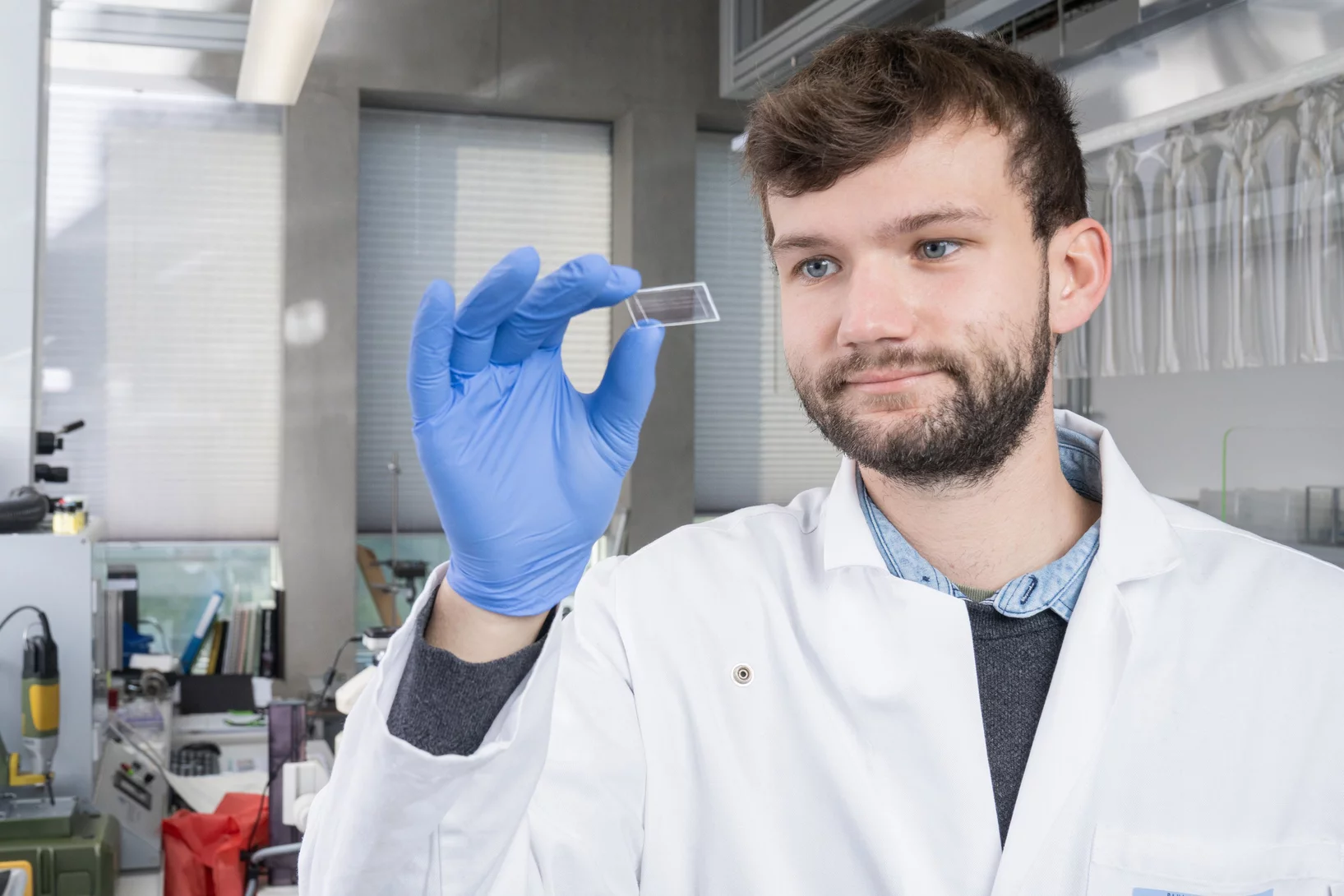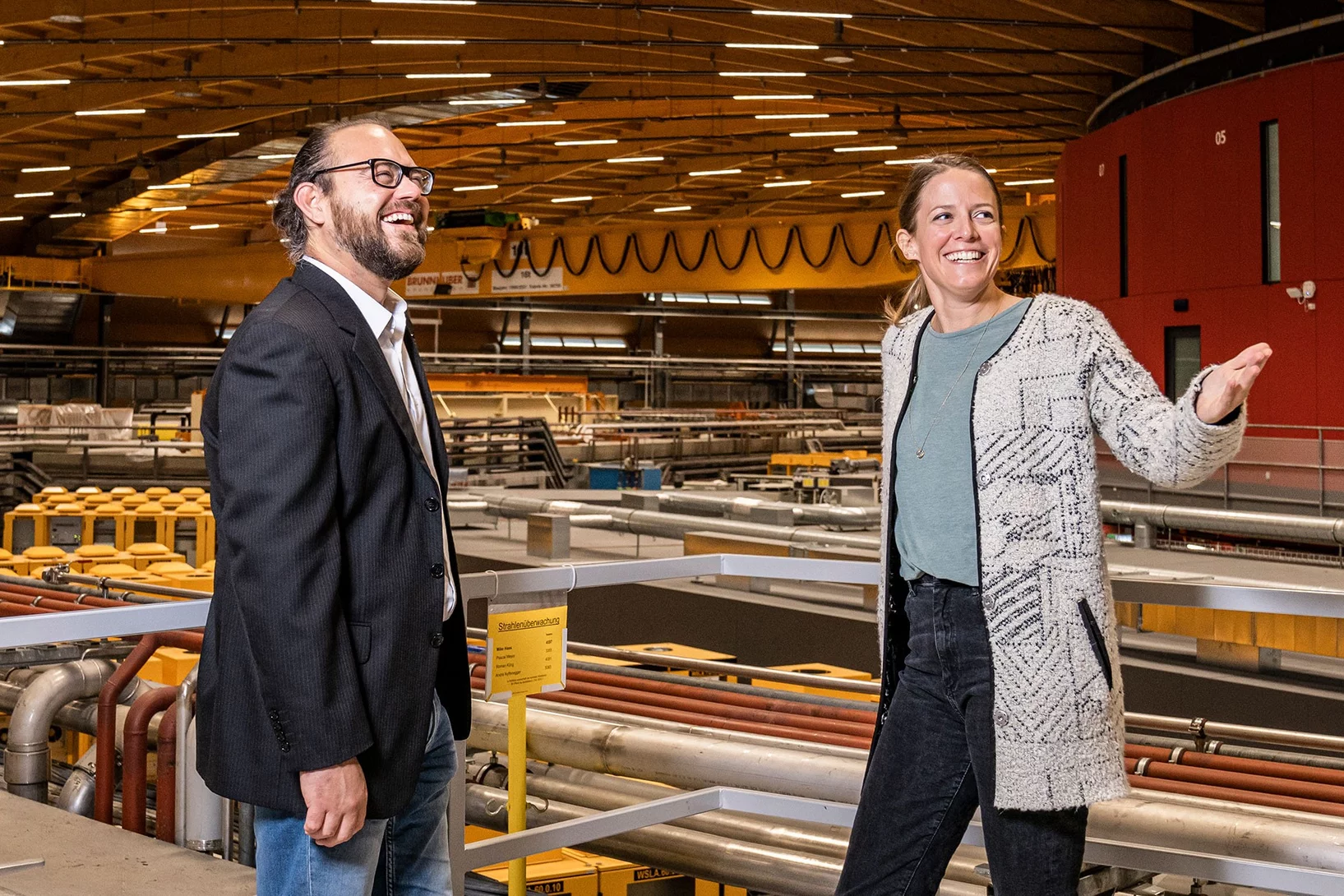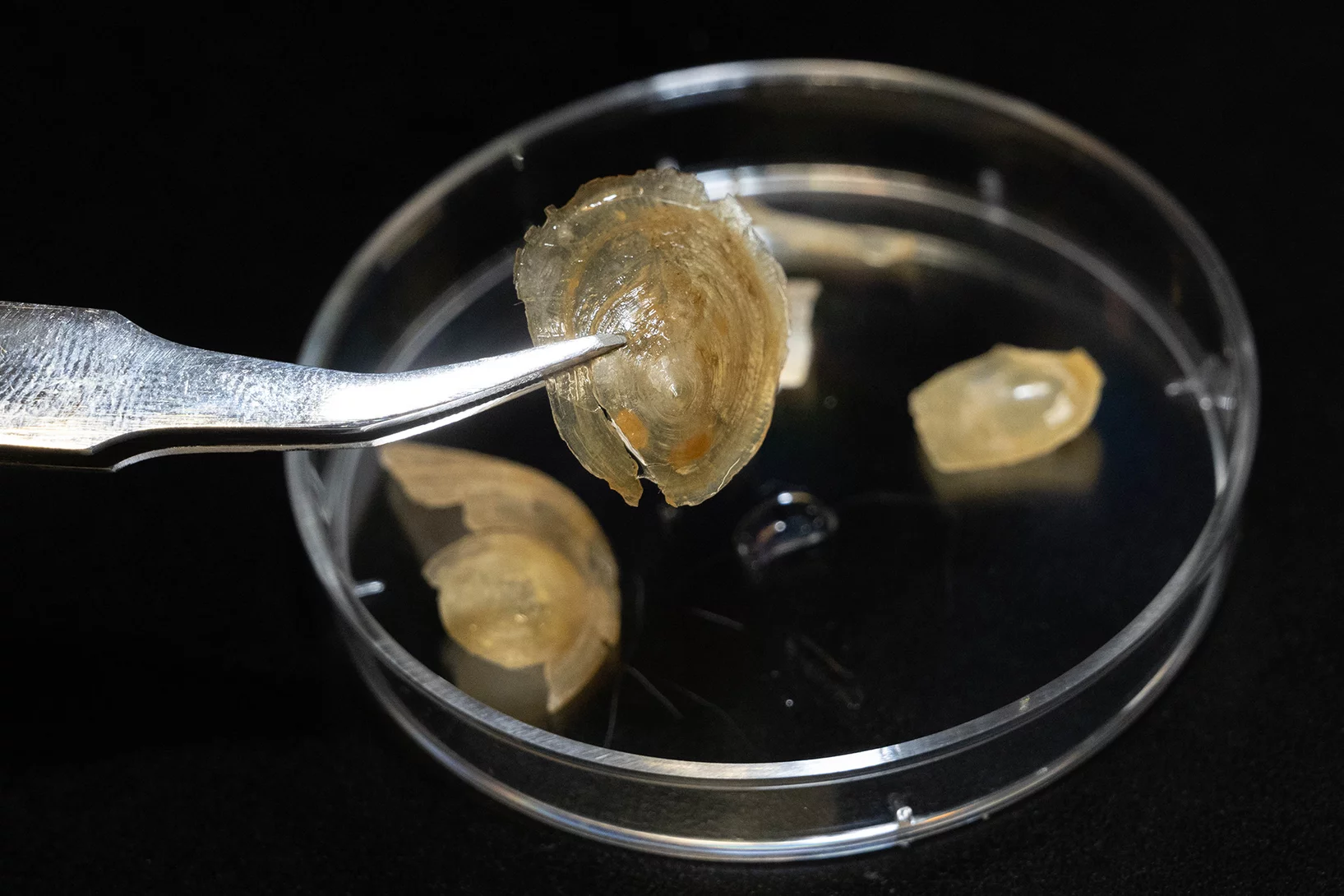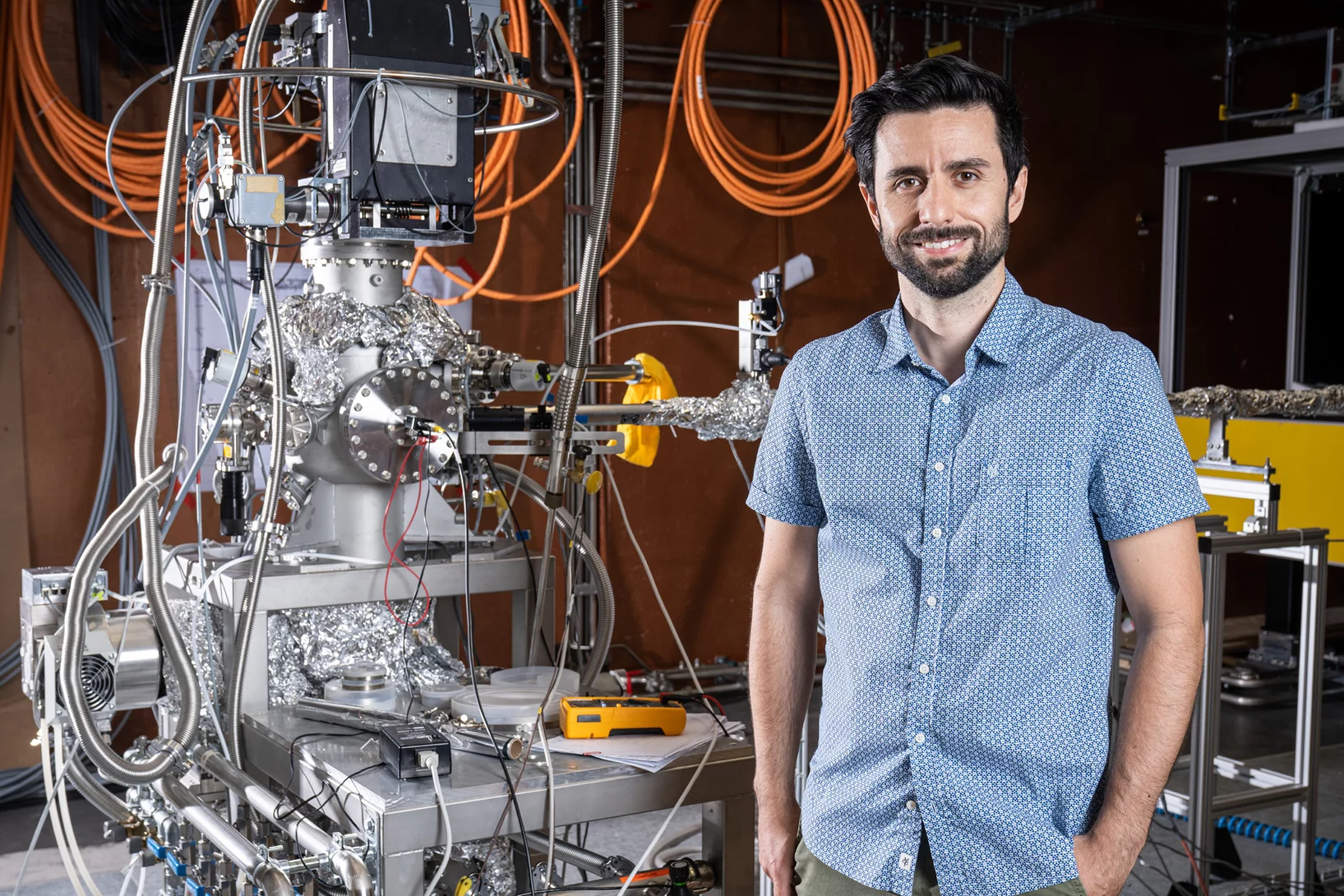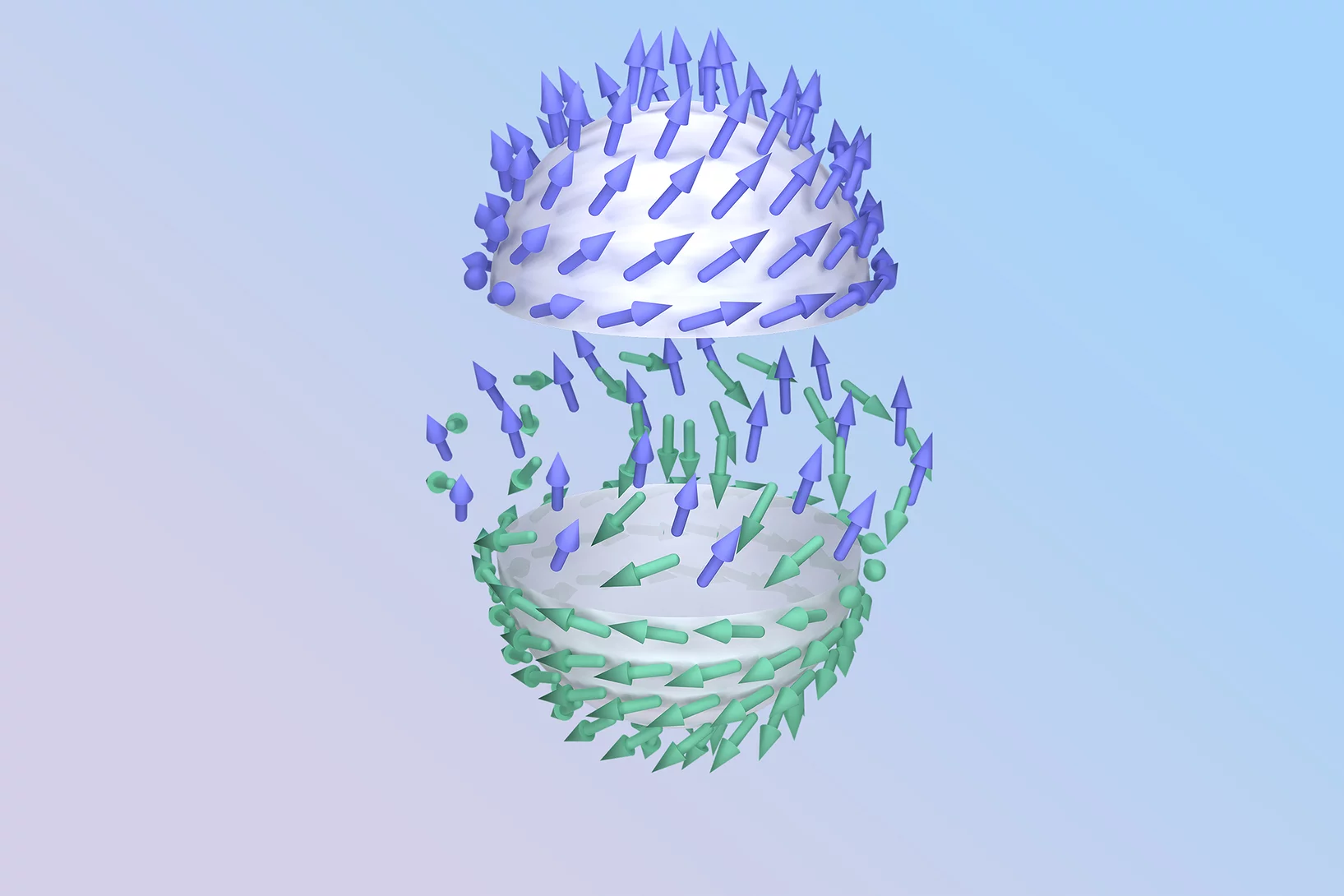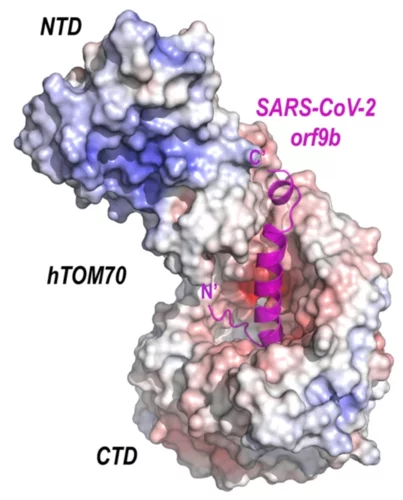Neuer, besserer Corona-Virus-Schnelltest
Der Test erkennt verschiedene Virus-Varianten und verbessert die Krankheitsprognose.
Mit Topologie zu kompakteren Quantencomputern
Auf dem Weg zu besonders stabilen Quantenbits haben Forschende die Elektronenverteilung in zwei Halbleitern genau untersucht.
Direct observation of crack formation mechanisms with operando Laser Powder Bed Fusion X-ray radiography
Operando high-speed X-ray radiography experiments reveal the cracking mechanism during 3D laser printing of a Ni superalloy.
Millionenförderung für Hirn- und Quantenforschung
Der Europäische Forschungsrat bewilligt PSI-Projekte zur Entwicklung eines Quantencomputers und zur Hirnforschung in Höhe von 5 Millionen Euro.
Halbleiter erreichen die Quantenwelt
Mit einem Supraleiter aufgemotzt: Die Halbleitertechnologie könnte eine neue Wendung erhalten, indem Quanteneffekte in Supraleitern ausgenutzt werden.
Priority access call for work on combating COVID-19 continues
On January 30th, 2020, the WHO declared the recent outbreak of coronavirus disease 2019 (COVID-19), a public health emergency of international concern. It declared that there is an urgent need to improve our understanding of the newly identified virus and its possible future evolution as well as to contain the spread; to develop precise diagnostics and treatment, and to improve the public health response and patient care.
The COVID priority access call continues and is still open in 2022.
Fingerprint of Copper in Peptides Linked to Alzheimer's Disease
In an interdisciplinary project, researchers from the Laboratory of Nanoscale Biology in BIO and the Laboratory for Condensed Matter in PSD have revealed the reaction between the nitrogen atoms of the amyloid-beta peptide and copper/zinc ions by using soft X-ray absorption spectroscopy.
Ground-breaking technology development recognised
PSI researchers win the international Innovation Award on Synchrotron Radiation for 3D mapping of nanoscopic details in macroscopic specimens, such as bone.
Overview of SwissFEL dual-photocathode laser capabilities and perspectives for exotic FEL modes
SwissFEL is a compact, high-brilliance, soft and hard X-ray Free Electron Laser (FEL) facility laser composed of two parallel beam lines seeded by a common linear accelerator (LINAC), and a two-bunch photo-injector. For the injector, an innovative dual-photocathode laser scheme has been developed based on state-of-the-art Ytterbium femtosecond laser systems. We just published an overview of the the SwissFEL Photo Cathode Drive Lasers (PCDL) performance, pulse shaping capabilities as well as the versatility of the systems, which allow many different modes of operation of SwissFEL [1]. The full control over the SwissFEL electron bunch properties via the unique architecture of the PCDL will enable in the future the advent of more advanced FEL modes; these modes are, but not restricted to, the generation of single or trains of sub-fs FEL pulses, multi-color FEL and finally the generation of fully coherent X-ray pulses via laser-based seeding.
Glycation of collagen: Quantifying rates
Collagen is abundant in the connective tissue of human beings, e.g. in tendons, ligament and cornea. Glycation of collagen distorts its structure, renders the extracellular matrix stiff and brittle and at the same time lowers the degradation susceptibility thereby preventing renewal. Based on models and with parameters determined from experimental data, we describe the glycation of type 1 collagen in bovine pericardium derived bio-tissues upon incubation in glucose and ribose. We hope that this contributes to a better quantitative understanding of the effects of diabetes on collagen.
Ultraschnelle Kontrolle von Quantenmaterialien
Mit Licht die Eigenschaften von Festkörpern grundlegend verändern
Neuer Wirkstoff gegen Parasiten
PSI-Forschende identifizieren möglichen Wirkstoff gegen gleich mehrere einzellige Parasiten – darunter die Erreger der Malaria sowie der Toxoplasmose.
Einblick in 3-D: Die Synchrotron Lichtquelle Schweiz SLS
Linearbeschleuniger, Boosterring, Speicherring: Unsere 3-D-Grafik der Synchrotron Lichtquelle Schweiz zeigt das Innere der Anlage und wie sie der Forschung dient.
Dr. Manuel Guizar-Sicairos is awarded ICO prize
Dr. Manuel Guizar-Sicairos, beamline scientist at the cSAXS beamline, is the 2019 recipient of the International Commission for Optics (ICO) Prize. The distinction was awarded in the EOSAM conference in Rome.
Röntgenmikroskopie mit 1000 Tomogrammen pro Sekunde
An der Synchrotron Lichtquelle Schweiz SLS haben Forschende einen neuen Rekord in einer Bildgebungsmethode namens Tomoskopie aufgestellt.
Das Rätsel der biegsamen Schale
Weshalb die Hülle eines Meerestiers im Wasser weich, an der Luft aber hart ist.
Das Praktische im Aussergewöhnlichen
Niels Schröter erhält einen Preis der Schweizerischen Physikalischen Gesellschaft SPG.
Nanobodies against SARS-CoV-2
In a study published in EMBO Journal, researchers at the Max Planck Institute for Biophysical Chemistry, Göttingen, Germany, developed nanobodies that efficiently block the coronavirus SARS-CoV-2 and its variants. The high resolution structural characterization was performed at the X10SA crystallography beamline at the Swiss Light Source.
Creating novel quantum phases via the heterostructure engineering
Within this synergetic collaboration, PSI scientists have investigated the correlation between magnetic and electronic ordering in NdNiO3 by tuning its properties through proximity to a ferromagnetic manganite layer. The main outcome is that the stray magnetic field from the manganite layer causes a novel ferromagnetic-metallic (FM-M) phase in NNO. This work demonstrates the utilization of heterostructure engineering for creating novel quantum phases.
Erstes Licht an Furka: Die Experimente können beginnen
Der Weg zu weltweit einzigartigen Experimenten ist frei.
Geheimnis der Stradivari-Geigen enthüllt
Wie ein internationales Team von Forschenden herausfand, griffen die alten italienischen Meister Stradivari und Guarneri beim Geigenbau zu unerwarteten chemischen Hilfsmitteln.
Die Physik in neuen Metallen verstehen
Forschende des PSI könnten gemeinsam mit internationalen Kollegen nun korrelierte Metalle für die Anwendung in der Supraleitung, Datenverarbeitung oder in Quantencomputern nutzbar gemacht haben.
Synchrotron movies
Prof Philip Willmott, the author of the book 'Introduction to Synchrotron Radiation: techniques and applications' (second edition, John Wiley & Sons, Chichester, 2019. ISBN: 9781119280392), makes the scripts for the simulations and animations available to the public.
Der Corona-Dunkelziffer auf der Spur
Das Universitätsspital Zürich nutzt vom PSI hergestellte Proteine für seine breit angelegte Antikörperstudie, um herauszufinden, wie viele Menschen sich mit dem Coronavirus infiziert haben.
How ethane-consuming archaea pick up their favorite dish
Scientists decode the structure of the enzyme responsible for the ethane fixation by – beside others – using the SLS.
PSI: stetig voran im Kampf gegen Corona
Kristallstrukturanalyse, Computermodelle, Zellkulturen – um Sars-CoV-2 zu erforschen, beschreitet das PSI viele Wege. Ein Überblick.
Magnetische Nanowelt
Am PSI stossen Forschende auf exotische Phänomene wie frustrierte Magnete und Nanowirbel, mit denen vielleicht dereinst Daten besser gespeichert werden können.
Wie Katalysatoren altern
Katalysatoren, die in der Industrie eingesetzt werden, verändern über die Jahre ihre Materialstruktur. Mit einer neuen Methode haben PSI-Forschende dies nun auf der Nano-Skala untersucht.
Crystal structure of SARS-CoV-2 Orf9b in complex with human TOM70 suggests unusual virus-host interactions
In a study published in Nature Communications, researchers at the NHC Key Laboratory of Systems Biology of Pathogens in Beijing, China, in collaboration with the Paul Scherrer Institut characterize the interactions of SARS-CoV-2 orf9b and human TOM70 biochemically, and they determine the 2.2 Å crystal structure of the TOM70 cytosolic domain with a bound SARS-CoV-2 orf9b peptide.
Application of synchrotron-XRPD to protein powders
Breakthrough applications of high-resolution and high-counting statistics synchrotron X-Ray Powder Diffraction to protein powders leading to the determination of a 1.8 structural model of the pharmaceutical peptide "octreotide" - the highest resolution ever achieved for a peptide of this complexity using X-ray powder diffraction and crystallographic methods.


